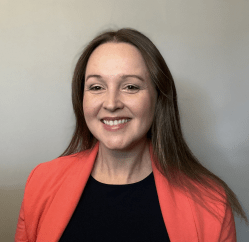This report examines how digital credentials and learning and employment records (LERs) are shaping the ways people access education and career opportunities around the world. A wide range of education and labor market technologies is proliferating, especially in North America and Europe. Although these new technologies may expand opportunities for many learners and workers, they also risk leaving many communities and individuals behind.1
This report first summarizes major trends and debates about how education technologies are creating new opportunities and challenges for achieving the fourth United Nations Sustainable Development Goal (SDG 4): equitable access to quality education and lifelong learning.2 Our contribution to these debates is to bring in evidence from three case studies on implementing and governing digital credentials, micro-credentials, and online learning. We conducted qualitative research (semi-structured interviews) and reviewed relevant literature to compile the case studies, with the aim of grounding the debates about education technologies and digital credentials in concrete settings where countries and higher education systems are adapting to digitalization in education and career pathways.
Despite growing interest and rapid growth in these ecosystems, the widespread adoption of digital credentials and LERs at scale is still in the very early stages. The foundational institutions, regulatory frameworks, and policies needed to govern technology—in general and more specifically to help people make sense of the ever-expanding smattering of digital learning and employment options—are very nascent. Many initiatives, such as efforts to digitize credentials and learning records, struggle with low awareness, lack of technical capacity, data security risks, and limited shared understandings of how to approach digitalization. We argue that the gradual process of adoption presents an opportunity for key stakeholders such as governments, post-secondary education providers, and employers to better align their underlying systems and technologies around the goal of advancing ethical and equitable access to education and lifelong learning.
We understand equity as achieving parity in policy, process, and outcomes for all, considering power, access, opportunity, treatment, impact, and outcome. This requires creating opportunities for marginalized populations and closing gaps in achievement and employment outcomes, while recognizing that learners are starting from different points and have different needs.
The first case study, the Irish University Association MicroCreds initiative, examines a higher education and government effort to integrate micro-credentials into the existing national qualifications framework and shows the importance of partnerships and collaboration with business-led organizations, government, higher education, and other key actors. The second case study, Indonesia Cyber Education (ICE) Institute, examines how a consortium of universities in Indonesia implemented national education policies with expanded online learning options from universities like Harvard and Massachusetts Institute of Technology (MIT) on the edX platform to increase access to high-quality tertiary education for institutions with limited resources and geographic challenges. The third case study, the Digital Credentials Consortium (DCC), examines an international network of 12 universities that are working to develop shared technological infrastructure for issuing degrees as digital credentials, conducting user research within higher education institutions, and producing open-source technologies that enable the issuance, storage, and verification of digital credentials.
Each case study provides positive examples of how technologies can be leveraged in innovative ways to increase access to quality education and lifelong learning (SDG 4), but the cases collectively demonstrate some common challenges. In each case, awareness and engagement with digital credentials and micro-credentials among learners, employers, governments, and others need to be further fostered to maximize the potential of the initiative. Each case also emerged from within formal higher education institutions, which may have limitations for extending these models beyond formal education. This focus on formal learning carries the risk of benefitting learners with relatively more privilege rather than closing the digital and socio-economic divide among learners (and workers). Finally, each case demonstrates the importance of building broad coalitions of partners to create an equitable and ethical digital credential ecosystem with a shared language and understanding about the technological options, potential benefits, and possible pitfalls.
Based on the interviews, case studies, literature, and feedback from public engagements alongside the United Nations General Assembly and related pre-conferences, we present a conceptual framework for guiding the further development of digital credentials and LERs (Figure 1). This framework builds on three key principles from the Global Convention on Higher Education—equity, sovereignty, and mobility—which we expanded further to add trust.3 For each principle, we provide recommendations to guide the development of more ethical and fair education technology ecosystems that do more good than harm.
Figure 1. Conceptual framework for guiding implementation
 Source: Authors’ analysis.
Source: Authors’ analysis.
The first principle, equity, refers to fair recognition of learning, and the promotion of inclusive access to quality education and lifelong learning with deliberate consideration for how innovations can be accessed by all learners. We present recommendations focused on prioritizing user-centered design, alignment of existing systems, digital inclusion, technical assistance, skills-based hiring, and establishing clear goals and metrics for assessing progress toward equity goals.
The second principle, mobility, refers to the physical or virtual ability of individuals to switch between countries, regions, institutions, or career pathways for the purpose of learning or working. We recommend a focus on adopting interoperable, open standards and ensuring that an individual’s data is easily portable between systems. In addition, we recommend that governments adopt multiple strategies to recognize non-formal and informal learning, and that employers shift away from degree-centric selection criteria in the hiring process.
The third principle is sovereignty, which means that individuals (or their guardians) are empowered to make informed decisions about the use and portability of their own data, that identity verification systems are transparent, and that there are adequate protections in place to preserve data privacy and security. We recommend governance frameworks and policies to foster interoperability and open standards, data rights legislation to enhance security and clarify ownership and privacy protections, and implement policies and enforcement mechanisms to ensure that education technology ecosystems are competitive and accessible to a diverse range of individuals and communities.
The fourth principle is trust, which means that digital credentials and digital records systems are set up in a way that employers, learners, workers, and education and training providers feel confident and informed about the reliability, quality, and meaning of the data, the individual’s identity, and the credentials they have earned. We call for a greater focus on adopting linked data infrastructure for verification and quality assurance processes that are user-friendly and minimize risk of security and privacy breaches. Outreach and user input are also essential to create more awareness of the value-add and quality of digital credentials and LERs, and the adoption of shared metrics on outcomes and qualifications frameworks can help improve transparency around quality and the value proposition of a given credential and career progression.
These recommendations—and the conceptual framework we have used to organize them—are meant to provide guidance on how different actors can engage with this complicated digital ecosystem to help create more equitable learning and employment pathways. Numerous organizations around the world are currently working on each of these recommendations, but further support, coordinated efforts, and engagement are needed at this vital stage of development to ensure the maximum benefit to learners.
Download the full report.
-
Footnotes
- Goger, A., Parco, A., & Vegas, E. (2022). The promises and perils of new technologies to improve education and employment opportunities. The Brookings Institution. Retrieved from https://www.brookings.edu/wp-content/uploads/2022/03/Digital-innovations_FINAL.pdf.
- Goal 4 | Department of Economic and Social Affairs. United Nations. Retrieved from https://sdgs.un.org/goals/goal4.
- UNESCO. Global Convention on Higher Education. UNESCO. Retrieved from https://www.unesco.org/en/education/higher-education/global-convention.
The Brookings Institution is committed to quality, independence, and impact.
We are supported by a diverse array of funders. In line with our values and policies, each Brookings publication represents the sole views of its author(s).













